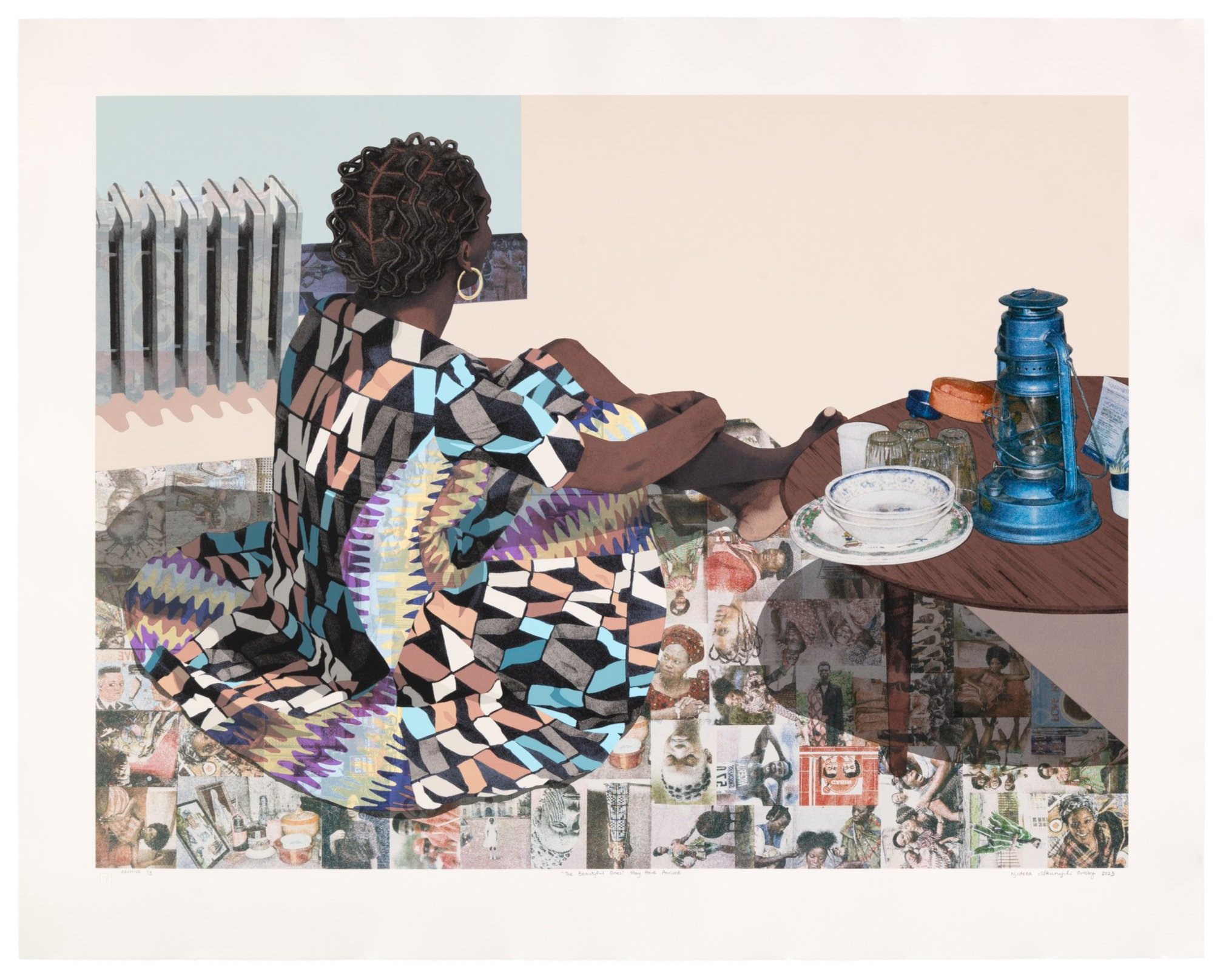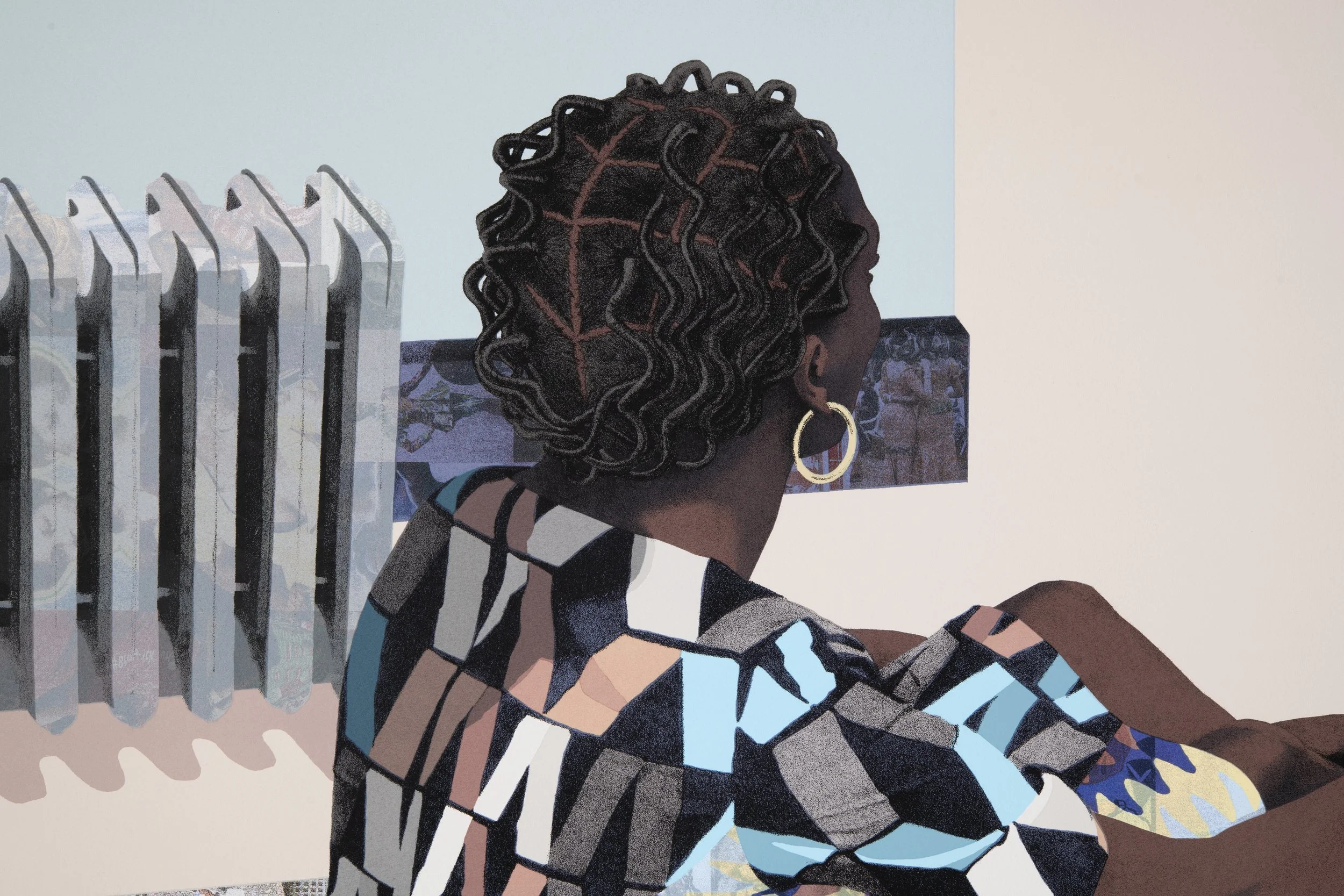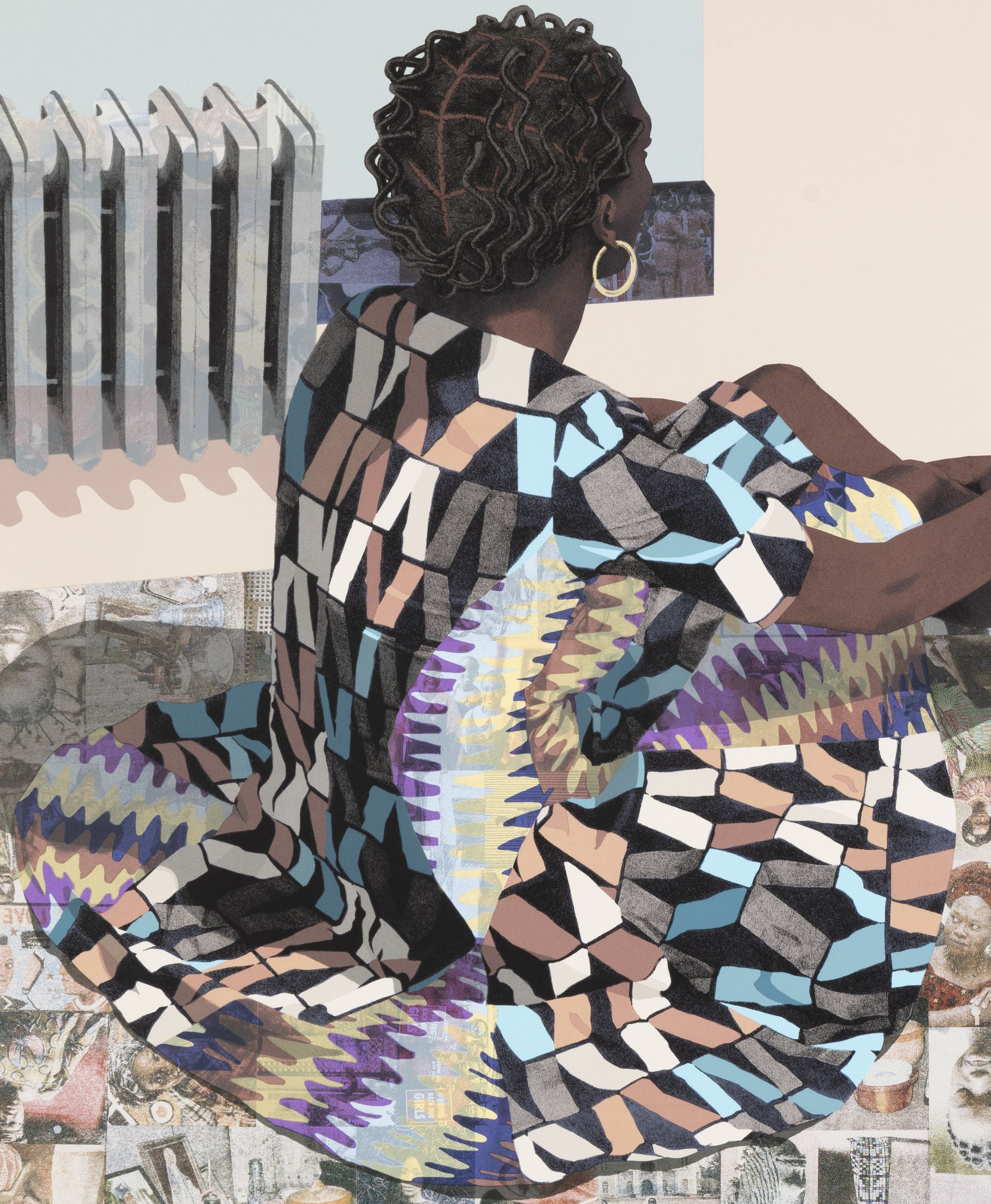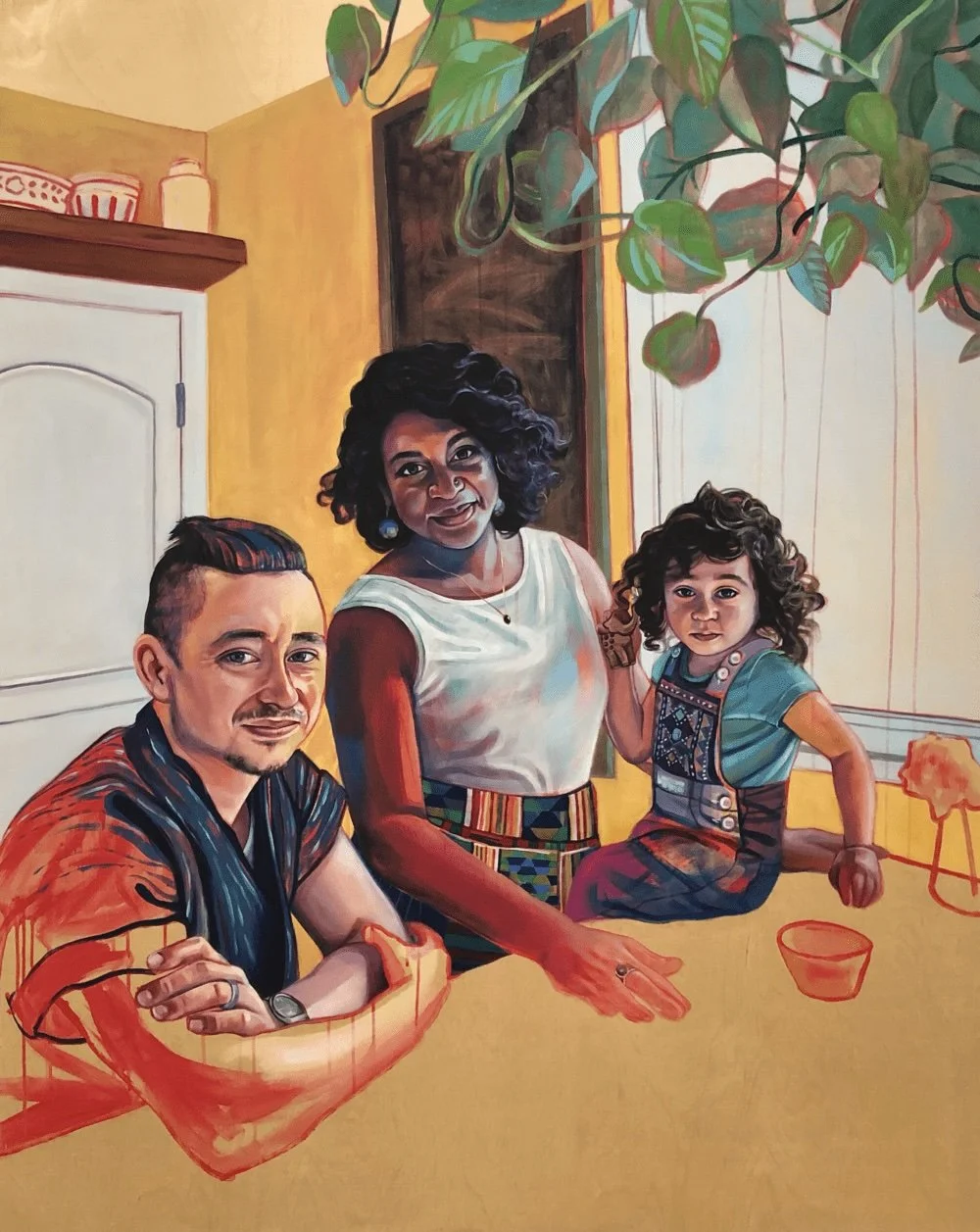“The Beautyful Ones” May Have Arrived
Nideka Akunyili Crosby, 2023
45-run Screenprint on Rives BFK
Paper Size: 36 1/2” x 46 inches”
Image Size: 29 7/8” x 39 7/8”
Edition of 60
About Njideka Akunyili Crosby
Drawing on art historical, political, and personal references, Njideka Akunyili Crosby creates densely layered figurative compositions that, precise in style, nonetheless conjure the complexity of contemporary experience. Akunyili Crosby was born in Nigeria, where she lived until the age of sixteen. In 1999 she moved to the United States, where she has remained since that time. Her cultural identity combines strong attachments to the country of her birth and to her adopted home, a hybrid identity that is reflected in her work.
On initial impression her work appears to focus on interiors or apparently everyday scenes and social gatherings. Many of Akunyili Crosby’s images feature figures — images of family and friends — in scenarios derived from familiar domestic experiences: eating, drinking, watching TV. Rarely do they meet the viewer’s gaze but seem bound up in moments of intimacy or reflection that are left open to interpretation. Ambiguities of narrative and gesture are underscored by a second wave of imagery, only truly discernible close-up.
Vibrantly patterned photo-collage areas are created from images derived from Nigerian pop culture and politics, including pictures of pop stars, models, and celebrities, as well as lawyers in white wigs and military dictators. Some of these images are from the artist’s archive of personal snapshots, magazines, and advertisements, while others are sourced from the internet. These elements present a compelling visual metaphor for the layers of personal memory and cultural history that inform and heighten the experience of the present.
While the artist’s formative years in Nigeria are a constant source of inspiration, Akunyili Crosby’s grounding in Western art history adds further layers of reference. Religious art, the intimism of Edouard Vuillard’s intoxicatingly patterned interiors, the academic tradition of portraiture and, in particular, still life painting become vehicles for delivering, Trojan horse-like, new possible meanings.
These are images necessarily complicated in order to counter generalizations about African or diasporic experience. Talking about her work, Akunyili Crosby notes, ‘In much the same way that inhabitants of formerly colonized countries select and invent from cultural features transmitted to them by the dominant or metropolitan colonizers, I extrapolate from my training in Western painting to invent a new visual language that represents my experience — which at times feels paradoxically fractured and whole — as a cosmopolitan Nigerian.’
Njideka Akunyili Crosby was born in Enugu, Nigeria in 1983 and currently lives and works in Los Angeles. She was awarded a 2021 United States Artists Fellowship and 2017 MacArthur Fellowship. Akunyili Crosby is the recipient of the 2020 Carnegie Corporation “Great Immigrant, Great American” Award; the 2019 African Art Award; the 2017 Future Generation Art Prize Shortlist; the 2016 Prix Canson Prize; the 2015 Foreign Policy’s Leading 100 Global Thinkers of 2015 Prize; the 2015 Next Generation Prize, New Museum of Contemporary Art; the 2015 Joyce Alexander Wein Artist Prize, and the 2014 Smithsonian American Art Museum’s James Dicke Contemporary Art Prize. She was named one of the Financial Times’ Women of the Year in 2016.
Akunyili Crosby’s work is in the collections of major museums including Los Angeles County Museum of Art, The Metropolitan Museum of Art, The Museum of Modern Art, The Nasher Museum of Art at Duke University, The Norton Museum of Art, Pennsylvania Academy of the Fine Arts, San Francisco Museum of Modern Art, The Studio Museum in Harlem, Tate, Whitney Museum of American Art, Yale University Art Gallery, and Zeitz MOCAA.
Pricing and availability can be found here, or you may contact Gallery Director, Alex Blaisdell alex@highpointprintmaking.org
































